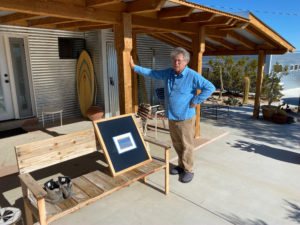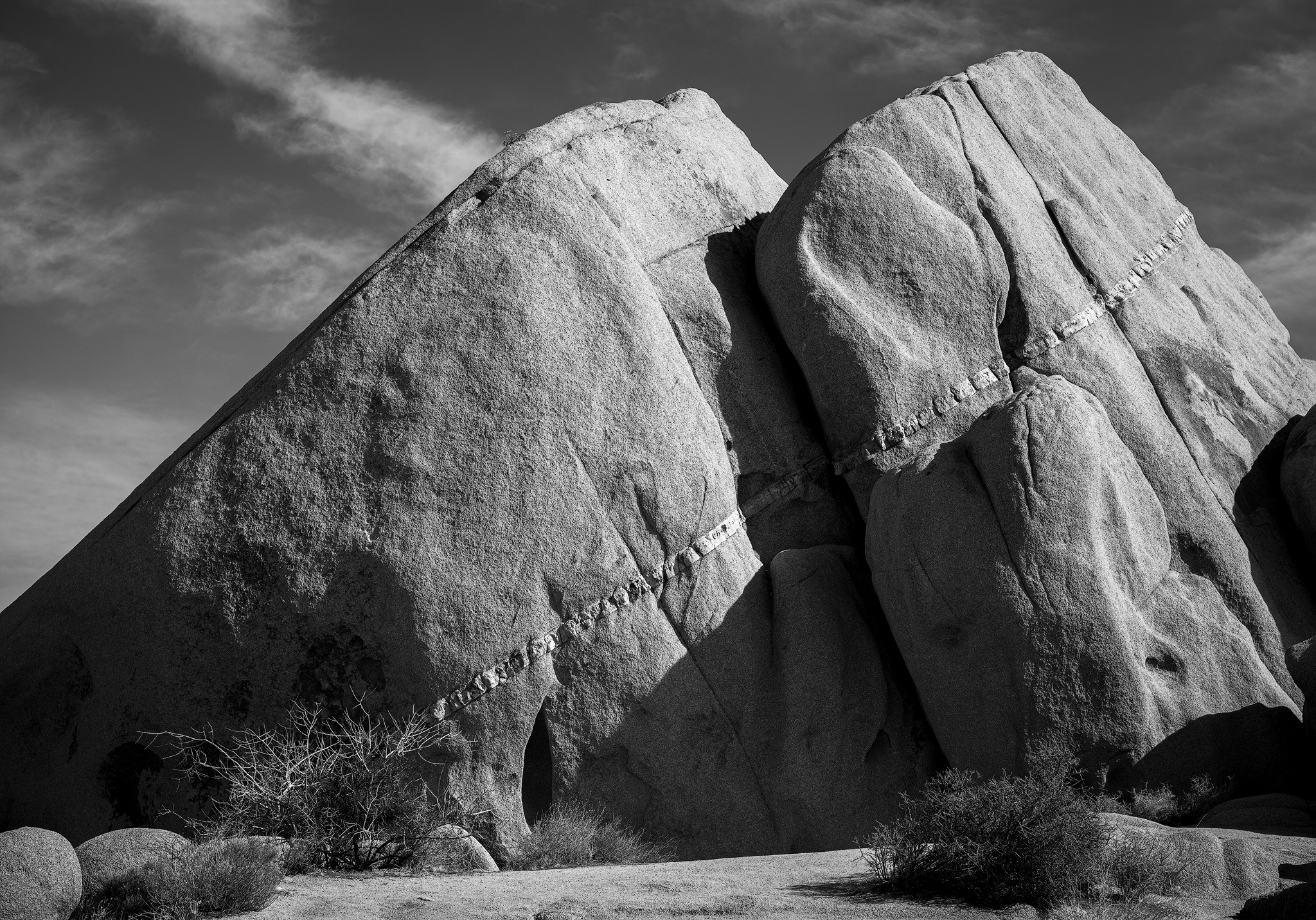First, on a serious note…
Early February, 2020 found me back in Joshua Tree for the third year in a row with Don Messec of Making Art Safely. Early February seems almost like a lifetime ago with covid-19 now confining us to our homes. We had heard that there might be some people quarantined at the nearby Twentynine Palms Marine base but it didn’t seem to be that big a deal. Boy, was that wrong!
So please pay attention to the medical professionals and not the politicians. This is and will be a trying time for our country but come on, we’re Americans. We’ve got this!
Image and Platinum Print: Joshua Tree
This is a “destination” photography and platinum/palladium (pt/pd) printing workshop. Don and his sidekick, Jim Hamstra from Arizona, have been printing with this “old school” method for years.

In this digital age, the process requires generating a film negative from a digital file for the size of print that you desire. This negative is then sandwiched with pt/pd coated paper and exposed to a UV light source such as the sun. This exposed paper is then dropped in a developer solution and Bang! your print instantly appears.
Okay, maybe that’s not a complete description of the process, but if you’re interested, there are plenty of YouTube videos out there that go into fine detail.
Don hosts a number of printmaking workshops in his studio in Santa Fe so if you’re interested check him out.
**Feel free to skip the next two sections and go straight to the photos. Won’t bother me at all.
Gear Talk
I had thought to travel light on this trip and only bring one camera/lens combo but at the last minute I said what the hell and brought a second combo.
I originally planned on bringing just my Leica M Monochrom (Typ246) with the absolutely incredible Leica APO-Summicron-M 50mm f/2 ASPH lens. This is a “full frame” camera with a sensor size equivalent to a 35mm film camera. The 24MP Monochrom only shoots black and white. No color whatsoever. Since a pt/pd print is black and white this makes the Monochrom a perfect choice. And when paired with the 50mm lens the amount of detail in the photographs is stunning. Hopefully later this year I’ll be hanging some 30″ x 40″ prints around the house.
The day before heading to California I decided to add the Fujifilm GFX50S paired with the Fujinon GF 32-64mm f/4 R LM WR. (Side note: I don’t know what all that means either except WR is weather resistant and that’s a biggie) This is the same basic combo that I took last year and it shoots color, really nice color. The GFX50S is a 51MP “medium format” digital camera and generates a file about twice the size of the Leica or 57MB vs 25MB. This combination also delivers images with details out the wazoo. It also bogs down your computer and fills up the SD cards in your camera in a hurry. This combo will easily print at 40″ x 60″ and we’ve got a bare spot above the fireplace that’s perfect for one.
Post Processing
The latest estimate that I’ve seen is that 1.8 Billion photos and videos are added to the internet every day. Most of them are cat and dog videos, but hey I admit it, I watch’em. I’m retired and get bored. I don’t have that many Facebook friends or Instagram followers so I’ve got a lot of free time. (Side note: Have you seen the couple with the 3 huskies. They got a new couch for Christmas.)
Okay, enough of that. Virtually every photograph that I post will have come from a “RAW” image file. RAW meaning you get everything the camera sensor could record, including all the dust spots. Imagine taking a photo of the most beautiful sunset you’ve ever seen and then opening up that RAW image and going WTF!! It’s not going to look anything like what you saw. When you shoot JPEG files the camera does the processing for you so you immediately see that beautiful sunset. With RAW you have to then process the image in some form of software to get it to match your memory of the event. Or, maybe even make it look even better. That’s what makes me an artist! Jeez, it’s getting deep in here.
I’ll quote Ansel Adams here, “You don’t take a photograph, you make it” and “Twelve significant photographs in any one year is a good crop.”
So get on with it Charles, what do you use. Well, I have virtually every piece of photo processing software and plugin known to man on my computer and iPhone but then I find I’m a minimalist and rarely use any of it. I primarily use Adobe Lightroom Classic and to a minor extent Adobe Photoshop.
Anyway, here’s a selection of photos from this year’s trip that I hope you’ll like and maybe send me some comments. I wonder if Ansel would have more than a dozen in this digital age?




















